- ABOUT US
- INVESTMENT FUND
- PARTNERSHIP SERVICES
- IMPACT INITIATIVES
-
SPACES
- HONG KONG
- Co-working space
- Event Space
- Prototyping Lab
- LONDON
- Co-working space
- Event Space
-
FABRICA X
- HONG KONG
- LONDON
- Subscribe
In recent decades, the increasing market demand for chocolate products has led to the adoption of more ecologically intensive forms of cultivation techniques in order to achieve a higher yield to satisfy the demand of the market. These methods typically involve cultivating cocoa in thinned forest-shaded areas or slashing and burning forests to establish cocoa monocultures.1 As the farm ages, soil nutrients decrease, coupled with the fact that most farms are small, low gate prices of cocoa and high input prices (such as fertilizers and pesticides), this creates a dynamic of low yield (Fig. 1). This means farmers are forced to abandon overage plantations and move on to clear a new patch of forest to create new plantations.2,3 This inevitably negatively impacts the environment; if not addressed, these could contribute to the transgression of the planetary boundaries, including land use, biodiversity, and eutrophication.4
Fig.1 The dynamic of low yield. Source: Wessel et al. (2015)5
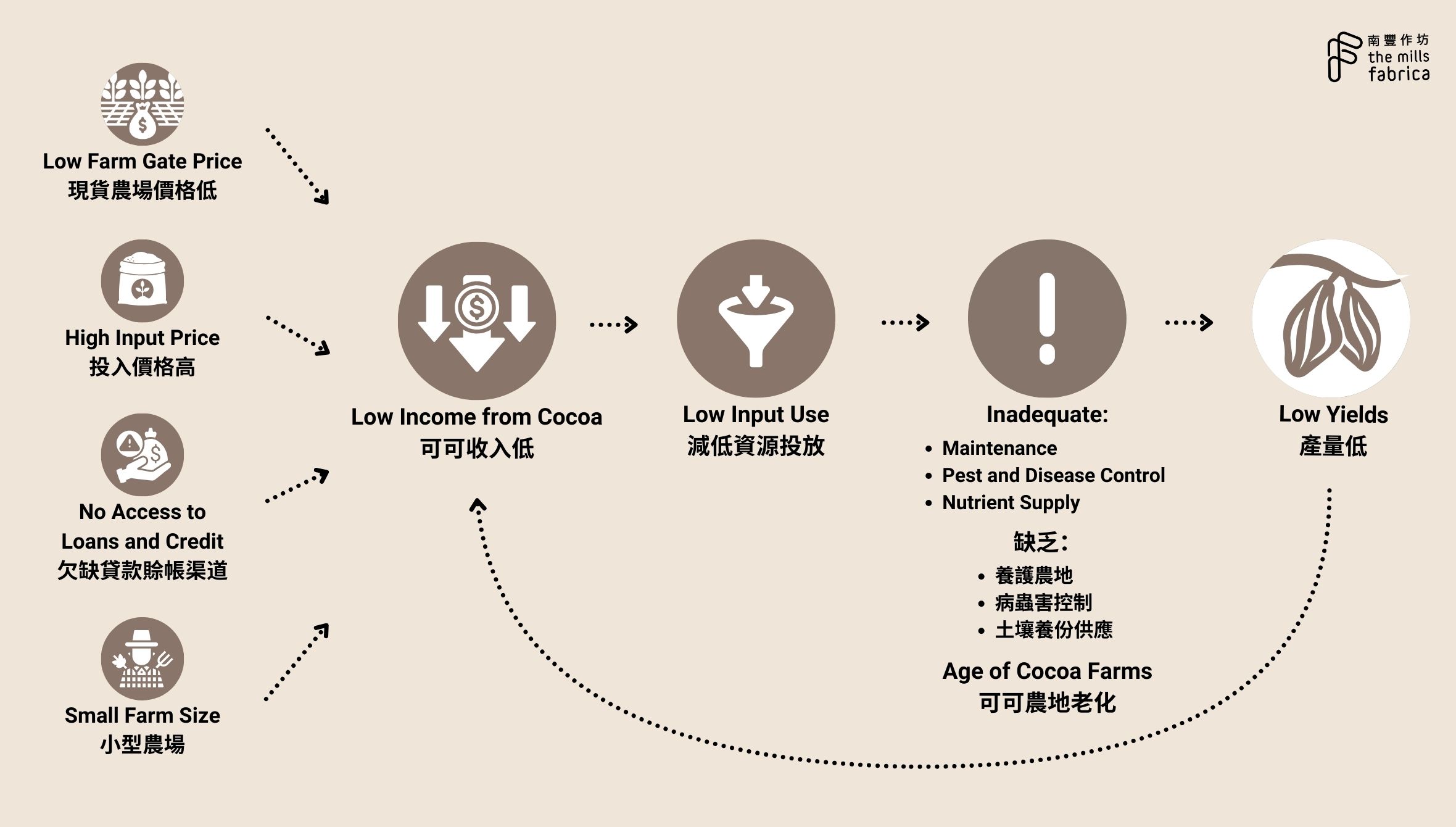
Cultivation of cocoa is associated with deforestation and biodiversity loss
According to a recent study, cocoa production has been linked to significant deforestation in protected areas on the Ivory Coast and Ghana. The study found that 37.4% of the deforestation (equivalent to 360,000 hectares) since 2000 occurred in protected areas on the Ivory Coast.6 Overall, WWF indicates that 70% of the country's illegal deforestation is associated with cocoa farming.7
Similarly, in Ghana, 13.5% (equivalent to 26,000 hectares) of deforestation in protected areas is linked to cocoa production. However, the true extent could be up to 40%, as official reports in Ghana may have underestimated the impact.8 The encroachment of cocoa plantations in protected areas has had a detrimental effect on local and regional biodiversity, leading to a decrease in plant diversity and species richness, as the disappearance of many native species has been observed.9
Image: picture via Canva.com
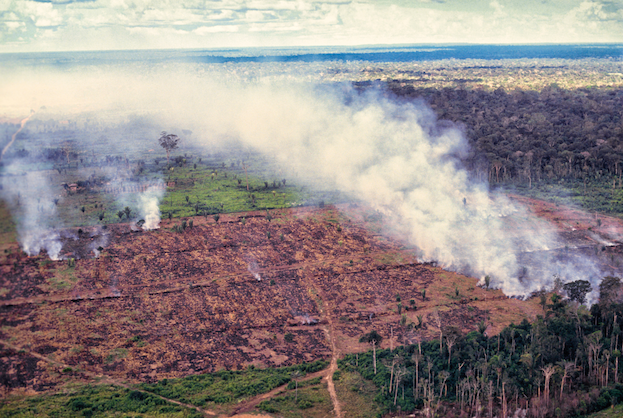
Release of greenhouse gases from land use change and reduction in carbon sequestration
The process of cutting down forests to create space for cocoa plantations results in the release of carbon that is stored within forests. Additionally, the destruction of forests reduces the amount of carbon that can be absorbed. This change in land use contributes significantly to the greenhouse gas emissions associated with chocolate production, with estimation showing that 54% of CO2e can be attributed to deforestation and land use change.10,11
Image: picture via Canva.com
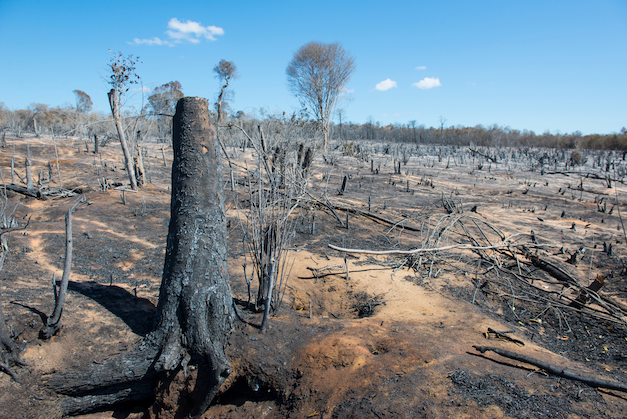
Intensified plantation activities increase the risk of heavy metal contamination
Cadmium and lead, the two most common heavy metals found in dark chocolate bars, can cause various health issues, particularly in pregnant women and young children.12 With the increasing need to clear new forests and use more agrochemicals to boost cocoa plantations, these practices inadvertently elevated the risk of heavy metal accumulations in cocoa pods that exceed regulatory thresholds because the cocoa plant naturally absorbs heavy metals from the soil in which it is grown.13 Besides, leaded fuel use for the transportation of cocoa pods can also cause roadside soil contamination, which is introduced later in the beans.14
Image credit: UTZ
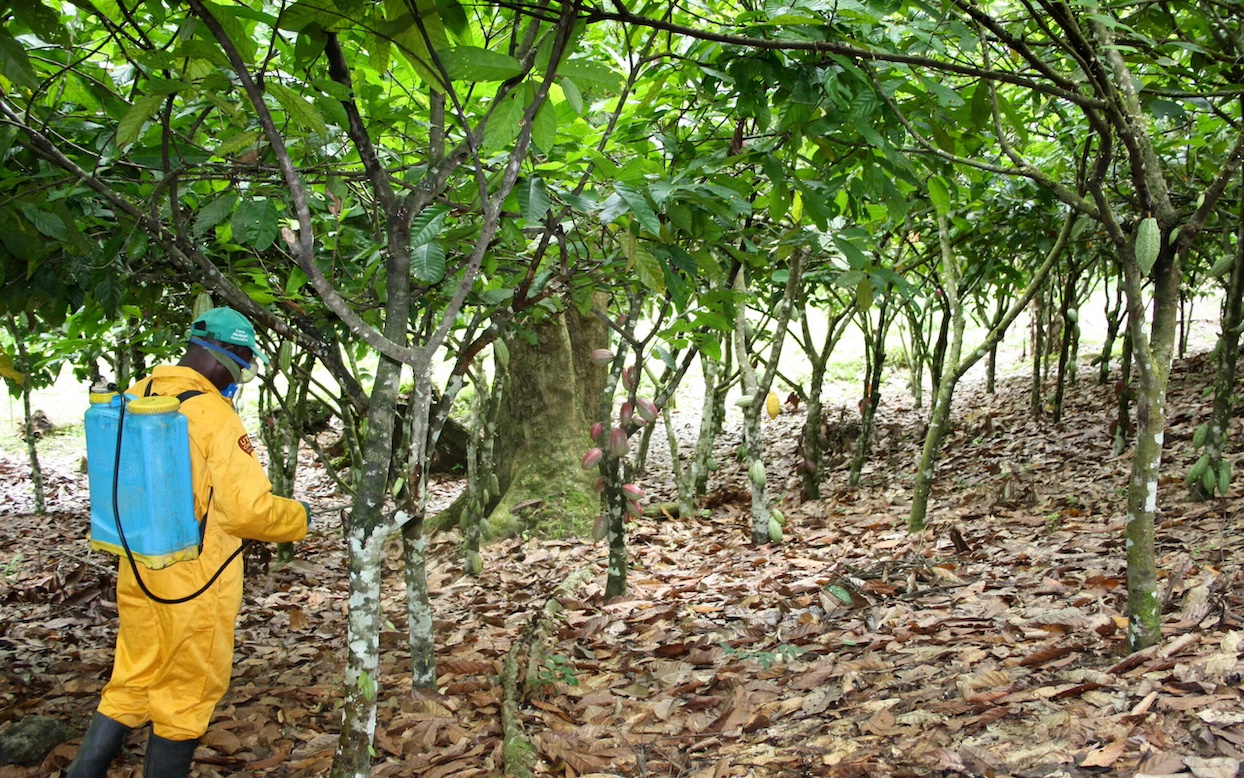
Some solutions are in place to better support farmers in preserving their livelihoods, boosting cocoa yields, and reducing the environmental impact of cultivation.
Chocolate producers are supporting cocoa farmers in West Africa through various initiatives.15 Many provide training and education to promote sustainable agricultural practices, helping farmers improve productivity while minimizing environmental impact. Some also offer access to resources such as disease-resistant cocoa tree varieties, tools, and fertilizers to enhance the quality and quantity of cocoa beans. Premium payments are introduced to incentivize sustainable practices and ensure farmers receive fair compensation. Collaboration with certification organizations allows farmers to meet standards for environmental, social, and economic criteria, expanding market opportunities.16 Additionally, dedicated farmer support programs provide technical assistance, access to credit, and community development initiatives to strengthen farmer capacity and resilience.
Governments and NGOs are setting up initiatives like The Cocoa & Forests Initiative to promote agroforestry.17 Agroforestry is an innovative and sustainable approach in cocoa plantations that integrates shade trees and diverse crops, creating a resilient agricultural landscape. The strategically planted shade trees provide a favorable microclimate for cocoa growth, reduce soil erosion, and enhance soil fertility. They attract beneficial insects and birds, reducing the need for pesticides and promoting biodiversity. Agroforestry systems offer additional income sources through alternative tree species and crops, reducing farmers' dependence solely on cocoa. Moreover, these systems sequester carbon dioxide, contributing to climate change mitigation.18 Agroforestry in cocoa plantations is recognized as a promising solution that enhances sustainability, biodiversity, and farmer livelihoods.
Image credit: Cristian Noboa, ANECACAO

However, these strategies come with unique challenges, slowing down efforts to support farmers and industry.
Improving farmers' livelihoods and cocoa yields through corporate programs and agroforestry comes with its own challenges. Programs such as increasing access to cheaper inputs and drought-resistant seeds and replicating them across different regions still face obstacles stemming from limited awareness and coordination between different stakeholders. Adopting agroforestry practices also requires significant investment, and small-scale farmers often face resource constraints like access to forest tree seedlings. The successful implementation of the technique depends on the dissemination of agroforestry techniques, which may be lacking in certain areas, and uncertainty still exists regarding the long-term financial viability of the agroforestry system. Moreover, the worsening effects of climate change may incentivize farmers to prioritize the production of drought-resilient staple crops like cashews, yam, maize, and okra over cocoa to meet the demands of a growing population for food.19
Overcoming these challenges takes time and necessitates sustained commitment, adequate financial resources, comprehensive training, and the establishment of an enabling market environment. These factors are vital for effectively improving farmer livelihoods and cocoa yields through agroforestry and corporate initiatives.
Image credit: Nestlé Cocoa Plan
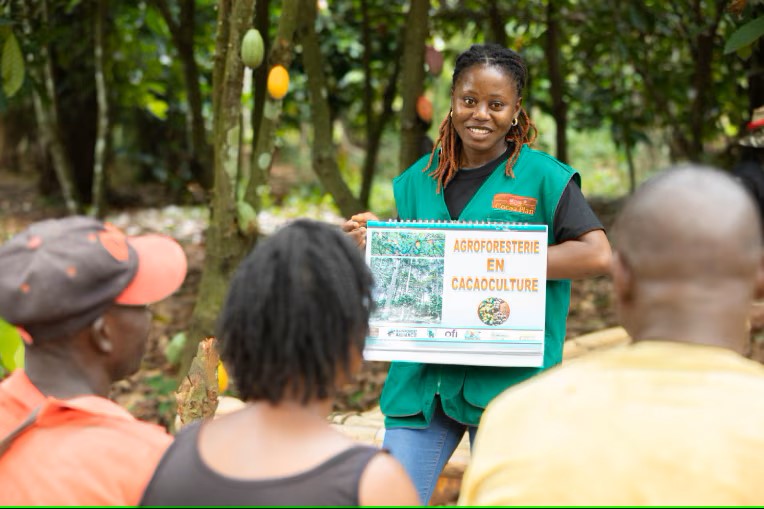
As these strategies unfold, innovations can play a pivotal role in ensuring a stable supply of cocoa
Amidst a worsening climate for cocoa cultivation and a projected increase in the cocoa deficit from 74,000 to 374,000 metric tons for the 2023-2024 season, the industry faces substantial challenges.20 This expanding deficit, combined with the impact of climate change (as mentioned in our previous blog) and a growing population, has the potential to reshape the cocoa cultivation landscape fundamentally. It underscores the pressing need to urgently address these issues, focusing on narrowing the cocoa demand-supply gap.
Innovators in the chocolate industry are actively addressing the issue, striving to alleviate the supply deficit by exploring alternative cocoa production methods. These initiatives encompass innovative approaches such as developing alternative cocoa using other ingredients to achieve a cocoa-like taste and functionality, and utilizing plant-cell culture techniques to create biologically identical cocoa in laboratories. These pioneering methods represent a concerted effort to address the issue of supply deficit, as well as potentially more sustainable ways of producing cocoa. In our upcoming blog, we will delve into these alternative methods further, exploring how these innovations can be part of the solution for the chocolate industry.
Image: California Cultured
